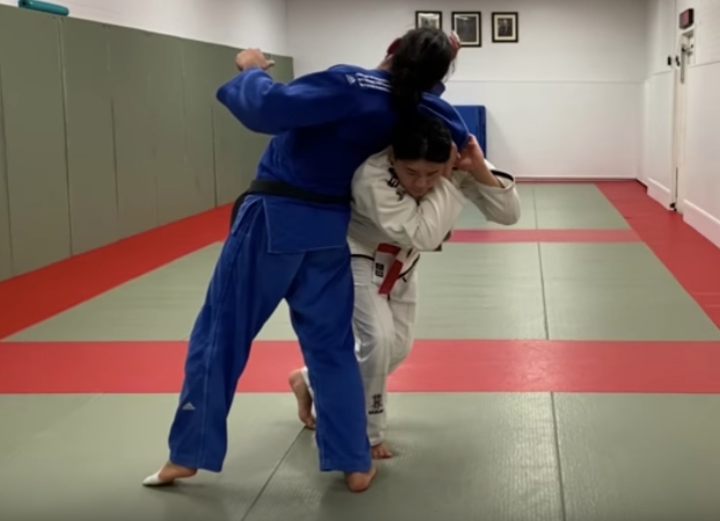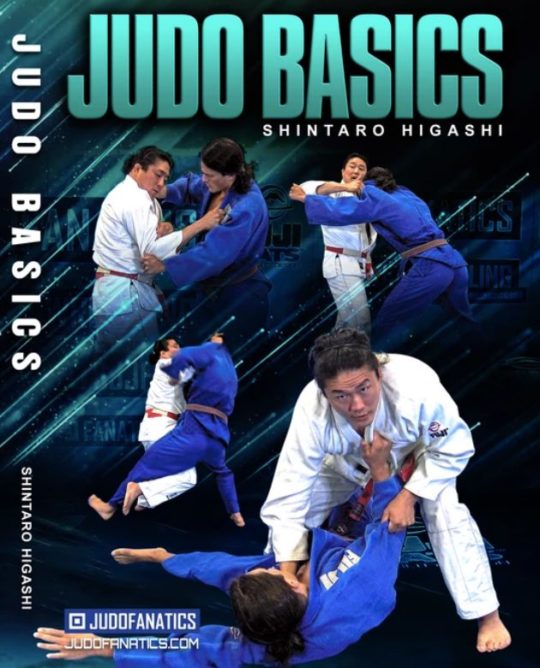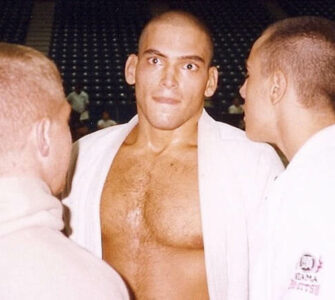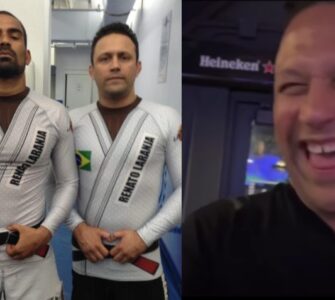Throwing people is so much fun, isn’t it?! If you’re a jiujiteiro that favors competing in a Gi, then Judo and perfecting its throws isn’t just fun, but also necessary for your all-around BJJ development.
One of those fantastic Judo throws is the Korean Seoi Nage – which (beware!) once executed well will render your opponent quite incapable of break falling properly.
Shintaro Higashi, a 6th degree black belt in Judo and a Japanese American Judo competitor, breaks down this amazing throw.
HOW DOES THE KOREAN SEOI NAGE LOOK LIKE?
Shintaro starts off by saying that there are essentially two variations that he likes to use when setting up the Korean Seoi Nage and that it all depends on the lapel.
Then, he demonstrates the classic Korean Seoi Nage situation: upon establishing a straight grip on his training partner’s lapel, Shintaro uses it to feed the lapel to his other hand as well. Then, he pivots in the opposite direction than it is the case in the Ippon Seoi Nage and throws.
BOTH LEAD WITH RIGHT LEG: TWO VARIATIONS
In a situation where both himself and his training partner are leading with their right leg and Shintaro has already placed his first grip, there are two options that he can choose from – depending on the partner’s reaction.
If his training partner tries to reach for the lapel underneath the gripping arm, Shintaro is going to block his elbow and then establish the other grip.
From there, he will pivot off of the point of contact where he’s blocking the partner’s elbow, blocking his shoulder in the process and bringing him straight down and over.
In the second case, if his training partner goes to reach over the top of the gripping arm, Shintaro will establish his second grip, step in – but then won’t be able to block his partner’s shoulder.
Normally, Shintaro explains, when the shoulder is blocked, he can take his training partner in the previously mentioned „straight down and over“ direction. However, in this case, he will go over and rotate the training partner directly over his head.
RIGHT VS LEFT LEG: ATTACK THE WRIST
Another way to set up the Korean Seoi Nage is in a situation of right versus left leading leg. In that case, Shintaro says that he always likes taking the initiative first in order to determine whether his training partner will take an inside or outside position, and then using that knowledge to set his throw up.
The key thing to notice here, Shintaro points out, is that his training partner’s arm forms a solid barrier, making it difficult for Shintaro to close that distance. For that reason, he needs to attack his training partner’s wrist – at an angle where he’s not very strong! In other words, Shintaro doesn’t want to go straight into his training partner because his elbow is creating a barrier.
For instance, if the training partner’s elbow is over the gripping arm, Shintaro will attack by pressing into his training partner’s wrist, gripping the lapel with the second hand and then – as he pivots – he throws his gripping arm through his training partner’s arm. This way, he breaks the grip effectively and then finishes the Korean Seoi Nage from there.
In the case where his training partner grabs the lapel by going underneath the gripping arm, Shintaro will attack the training partner’s wrist in the same way as before – not by pushing straight into him, but by creating an angle in which he is trying to drive the training partner’s hand into his body.
Then, once he pivots and the grip is broken, Shintaro blocks the shoulder and finishes the throw.
Watch Shintaro Higashi demonstrate the Korean Seoi Nage in phenomenal detail on the video below:
Learn how to grip, move, and off-balance anyone from one of the most respected teachers in the USA
- Master the basics with Shintaro Higashi, 6th-degree black belt and US National Champion
- Sharpen your judo basics and start scoring takedowns with technique (instead of muscle) with judo professor Shintaro Higashi’s fundamentals course.


















